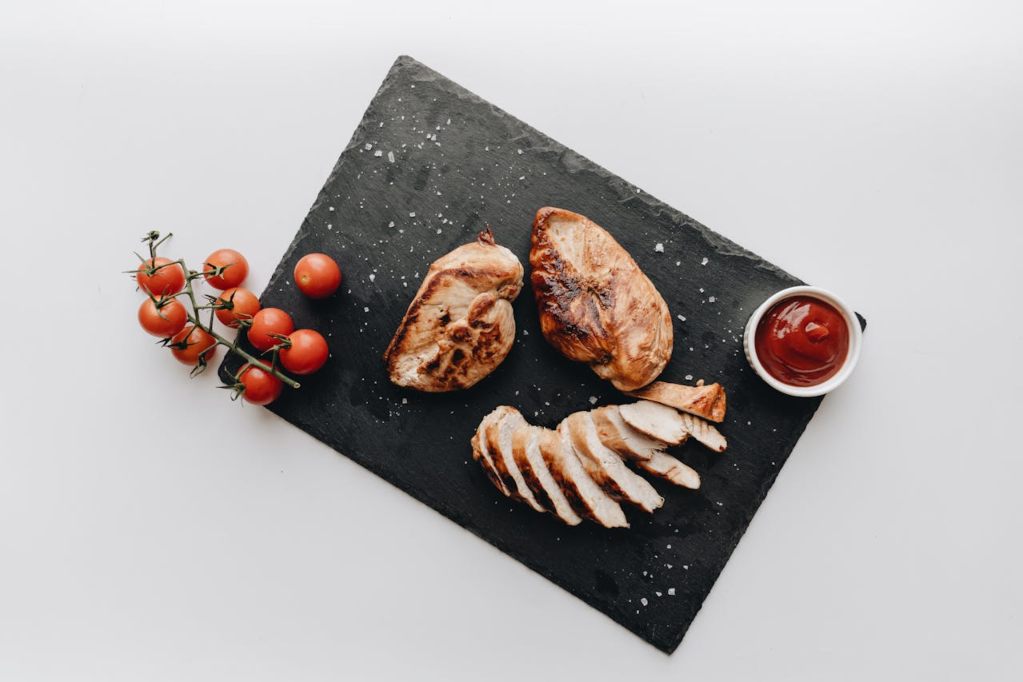Cooking chicken breasts on a gas grill isn’t tough, but your chicken will be if you don’t do it right! We’re here to make sure your grilled chicken comes off the grill juicy and bursting with flavor every time—no more rubbery hockey pucks!
Grilled chicken is an incredibly versatile protein that can be prepared and used in a million and one different ways. It’s the perfect blank canvas for getting creative with your recipes. Whether you prefer exotic or traditional, chicken will take on any flavor profile you throw at it.
All of that said, if you’ve had bad experiences making chicken breasts on a gas grill, you’re certainly not alone. It’s notorious for tasting like a big ole rubber band if you don’t use the right techniques and ingredients.
Follow these tips to make dry, bland grilled chicken a relic of the past!
1. To Brine Is Divine
Brining your chicken is a crucial step that often goes overlooked. Giving your chicken breasts a saltwater bath for just half an hour will tenderize the meat, make your marinade absorb deeper, and improve moisture retention.
To make a quick and easy brine, add ¼ cup of kosher salt can add ¼ cup sugar or brown sugar to every four cups of water, and stir until it dissolves. Soak the chicken in the brine for 1 to 4 hours.
2. Make Your Marinade

While you could put your chicken breasts on your gas grill without marinating them, the flavor’s going to be very mild. Skip this step if you prefer subtle flavors or would rather keep your chicken fairly flavorless so you can add sauces, spices, and herbs later.
Before cooking chicken breasts on a gas grill, think about flavor profiles. Grilled chicken can go in countless directions, and your marinade is the key to achieving your desired taste. Marinate for at least an hour, ideally overnight.
Marinade Suggestions
A good marinade has three components:
- Fats help the flavors penetrate and adhere to the meat, preventing it from sticking to the grill’s grates. Oil, butter, buttermilk, coconut milk, and yogurt are all great options for cooking chicken breasts on your gas grill.
- Acids break down and soften the meat while adding a bright zinginess that gives the chicken a multidimensional flavor. Citrus, vinegar, tomato juice, beer, and wine are popular choices.
- Herbs and spices bring bold flavors. There are endless options, including black pepper, garlic powder, red pepper flakes, oregano, rosemary, basil, thyme, curry powder, ginger powder, cumin, paprika, and cayenne pepper.
You can also add other ingredients, such as honey, soy sauce, Worcestershire sauce, fish sauce, barbecue sauce, liquid smoke, and mustard, to name a few.
The nice thing about chicken breasts is that it’s hard to go wrong! Even if you take an everything-but-the-kitchen-sink approach, you’ll probably end up with a tasty meal.
3. Equip Your Grill with FlavrQ
When making chicken breasts on a gas grill, we recommend having at least two grilling zones—one with high heat for searing and the other with indirect heat for finishing.
Properly searing and sealing the outside is the key to cooking chicken breasts on a gas grill and having them stay juicy and tender on the inside. The problem is that stock gas grills often struggle reaching the extreme heat necessary to achieve this.
Enter FlavrQ. Our proprietary gas grill accessories increase heat by 100° or more so you can sear and seal your meats to perfection. Even better, FlavrQ infuses your food with authentic charcoal-grilled flavor!
While you can still cook chicken breasts on a gas grill without FlavrQ, the results are night and day. Once you taste the difference, there’s no going back!
4. Sear and Seal the Outside

Okay, now your chicken is brined and marinated, and your grill is piping hot. It’s time to make magic.
- Boneless chicken breasts: Grill for 2-3 minutes on each side.
- Bone-in chicken breasts: Grill for 3-6 minutes on each side.
Keep an eye on your chicken. When it’s a beautiful golden-brown color with flash marks, it’s ready to move to indirect heat.
5. Finish with Indirect Heat
Once you’ve seared your chicken breasts on a gas grill, move it over to the indirect heat section and leave it there until the internal temperature is at least 165°. Try not to go too much higher, or you risk it getting dry and rubbery.
6. Let It Rest
Once you’re done cooking chicken breasts on your gas grill, put it on a plate or cutting board and cover it in a tin foil tent. Let it rest at room temperature for 10 minutes or so. It might be tempting to dive in, but resting lets the juices redistribute throughout the meat, so it’s juicier and more flavorful.
Level Up Your Grilling Game with FlavrQ
Now that you know how to cook chicken breasts on a gas grill like a pro, it’s time to give your gas grill a much-needed upgrade.
The FlavrQ Grilling system consists of two parts: the FlavrQ Grid and our patented Charcoal Chips™. The Grid is an easy-to-install add-on that allows your gas grill to use Charcoal Chips™, a 100% natural, chemical-free fuel derived from Canadian sugar maple wood.
Before ordering your FlavrQ Starter Kit, measure the dimensions of your gas grill and check the Grid’s dimensions (listed on the FlavrQ Grid page). The FlavrQ Grid fits the vast majority of gas grills on the market, but it’s best to confirm compatibility before purchasing.
If you’re tired of sacrificing flavor for convenience, explore our patented grilling system now. Whether you’re cooking burgers, steak, or chicken breasts on your gas grill, you’re going to taste the difference with every bite. Check out our BBQ blog for more expert grilling tips, and teach your old grill new tricks with FlavrQ!

